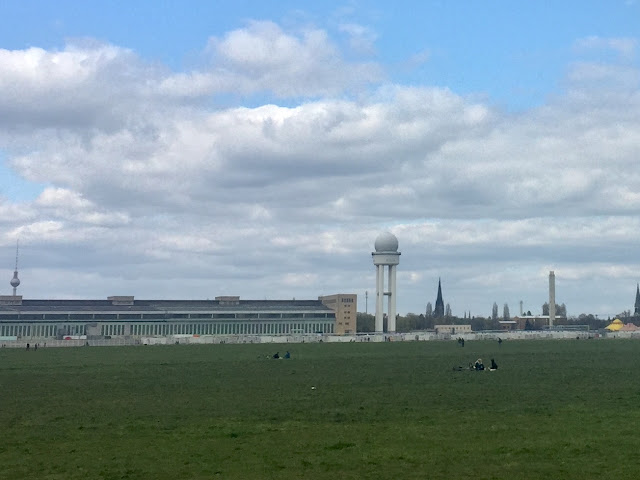Berlin's Airlift
On fine days, a popular destination in Berlin is the Tempelhofer Feld.
This park, one of the
largest urban open spaces in the world, was created in 2010 and occupies the
area that until 2008 accommodated Tempelhof Airport. Opened in 1923 as the airport
of the Reich Ministry of Transport, it was enlarged by order of Hitler during
the years when he was in power, in anticipation of an increase in air traffic
as part of his ambitious plan to turn Berlin into the 'World Capital Germany'
(Welthauptstadt Germania).
 |
| Tempelhofer Feld |
The airport's finest hour, however, came in 1948.
In the city divided after the end of the Second World War, Tempelhof was located in West Berlin, the section of the city split between the Allied powers and isolated from the rest of the western world, an island in the middle of East Germany.
In 1948, the Allies
introduced a new currency, the Mark, into the German territories they occupied,
without informing the Soviets, who, in reaction, closed all
communication routes to the west of the city: roads, rivers, railways and even
the electricity supply. Supplies of basic necessities, such as food, medicine
and coal for heating, would not last more than a month for the approximately
two million inhabitants of West Berlin. The Soviets expected the Allies to hand
over the entire capital to them, but France, Britain and the United States
mounted a huge relief operation exploiting the three air corridors that had
been assigned to them at the end of the war and which still connected West Berlin
to the rest of the western world by air.
Tempelhof Airport was
all that was available, but it was soon realised that it would not be enough to
guarantee the large quantity of deliveries needed to sustain the population:
they estimated that one landing per minute would be required! Nonetheless, the
operation was launched, the need was urgent, but at the same time a solution
was conceived and at Tegel the longest runway in Europe at the time
and a rudimentary airport facility were built in just ninety days.
Berlin loves to
remember its history: in honour of the airlift that kept the city alive for
almost a whole year, the square in front of Tempelhof airport has been named
Platz der Luftbrücke (literally, 'airlift square') and a memorial has been
erected, the Luftbrückendenkmal. Walk past it next time you go for a walk around the Tempelhofer
Feld!
 |
| Airlift Memorial |
A good idea to learn more about the Airlift and the Blockade is to visit the Allied Museum in Zehlendorf, where you will have the chance, among other things, to get inside one of the Rosinenbomber - as the planes taking part in the operation were called - and to see the original structure of Check PointCharlie.
 |
| The Rosinenbomber at the Allied Museum |
NOTE: All photos are mine and cannot be used without my permission.



Comments
Post a Comment